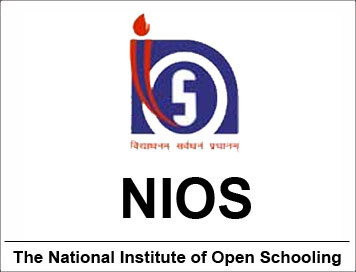(Download) NIOS Question Paper Of Geography Senior Secondary
Disclaimer: This website is NOT associated with CBSE, for official website of CBSE visit - www.cbse.gov.in
(Download) NIOS Question Paper Of Geography Senior Secondary
Time : Three Hours
Maximum Marks : 80
General Instructions :
(i) There are 21 questions in all.
(ii) all question are compulsory.
(iii) Marks for each question are indicated against it.
(iv) Question numbers 1 and 2 are on filling outline maps of the world and India
respectively. Each question contains 4 test-items of very short answers of
1 mark each.
(v) Question number 3 to 8, 19 and 20 are short answer question. Answer to these
questions should not exceed 60 words each.
(vi) Question number 9 to 14 and 21 are also short answer question. Answer to
these questions should not exceed 10 words.
(vii) Question numbers 15 to 18 are long answer questions of 5 marks each.
Answer of each of these questions should not exceed 140 words.
(viii) Outline maps of the WORLD and INDIA provided to you must be attached with
your answer books.
(ix) Use of templates or stencils for drawing outline maps in illustrating your
answer is allowed.
(x) Answers of question number 19 to 21 should be given from any ONE of the
OPTIONAL MODULES.
Q.1 On the outline map of the world provided mark and label each of the following correctly.
(4 x 1) = 4
(1.1) Andes range;
(1.2) River Nile;
(1.3) Plateau of Tibet;
(1.4) Prairies
Q.2 On the outline map of the India provided mark and label each of the following correctly.
(2.1) Aravali Range
(2.2) A leading cotton-textile center in Gujarat
(2.3) The oldest atomic power station in India
(2.4) A newly developed major port in Tamil Nadu (4 x 1) = 4
Q.3 Name six factor which influence the climate of a place (6 x ½ ) = 3
Q.4 Name three major parallel ranges of the Himalayas and state the height of each. (1½ x 1½ ) = 3
Q.5 Why is earth considered a unique planet? Give three reasons in support of your answer. (3 x 1) = 3
Q.6 Compare and contrast the latitudinal location and natural vegetation of the Tundra region with those of the Hot Desert region. (1 ½ + 1 ½ ) = 3)
Q.7 How does land use change with time? Give three examples. (3x1)=3
Q.8 Explain three important physical factors responsibly for uneven distribution of population in India. (3x1)=3
Q.9 What are ocean currents? Name three factors which influence the ocean currents . (1+3)=4
Q.10 Describe briefly the important characteristics of the equatorial Lowlands region with reference to its location, climate, natural vegetation and animal life. (4x1)=4
Q.11 Name four types of soils found in Penninsular India. State four characteristics of the soil which is of volcanic origin. (2+2)=4
Q.12 Point out two differences between estuary and delta. (2+2)=4
Q.13 Explain with two supporting facts how each of the following factors influences the climate of India :
(a) Location and latitudinal extent;
(b) Northern mountains;
(c) Distance from the sea;
(d) Wind direction (4x1)=4
Q.14. Give two reasons for each of the following :
(14.1) The hilly and mountainous terrain provide unfavourabel conditions for
laying railway line.
(14.2) Road transport is flexible, reliable and quick. (2+2)=4
Q.15 Name the four types of mountains based on their mode of formation, and also describe briefly any three economic benefits of mountains. (2+3)=5
Q.16 Describe briefly five major characteristic of traditional Agriculture in India. (5x1)=5
Q.17 Distinguish between land breeze and sea breeze. Give five distinctive features of each.(5x1)=5
Q.18 Study the table given below carefully and answer the following question :
